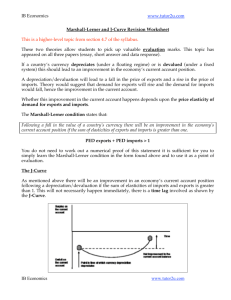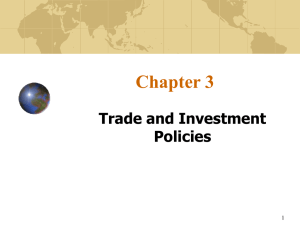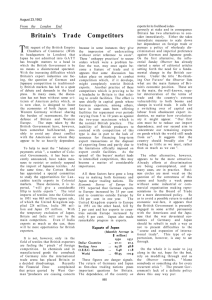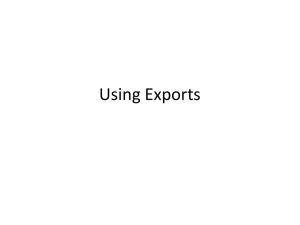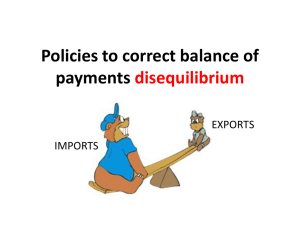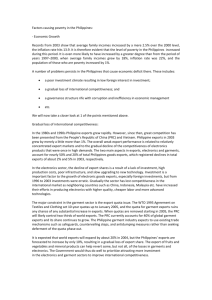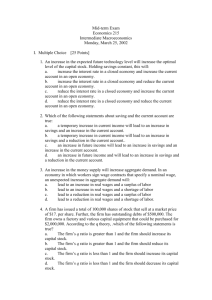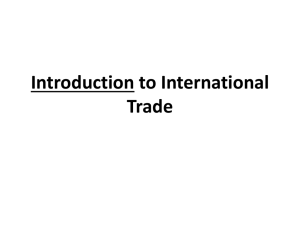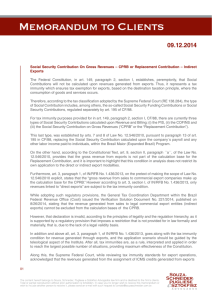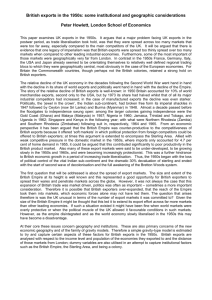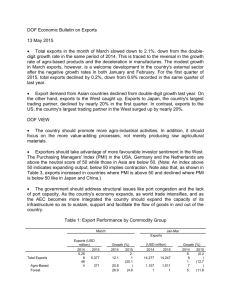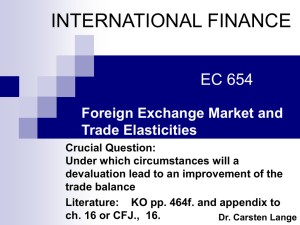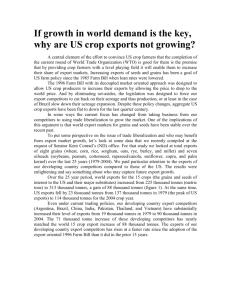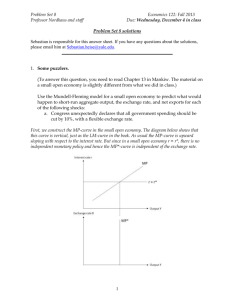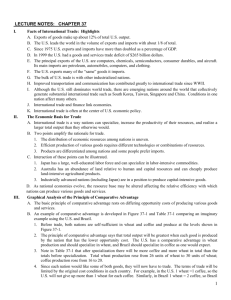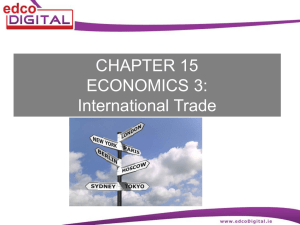Talk: Competitiveness
advertisement
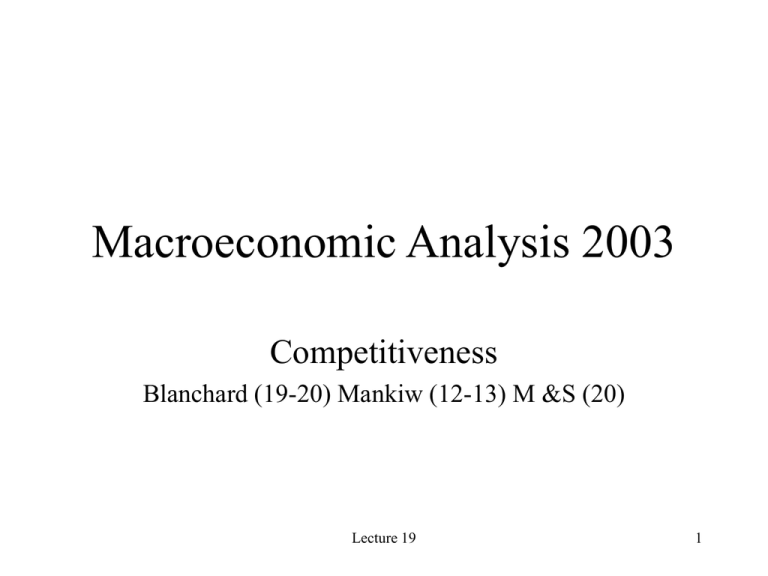
Macroeconomic Analysis 2003 Competitiveness Blanchard (19-20) Mankiw (12-13) M &S (20) Lecture 19 1 A Competitive Economy • • • • Exports more than imports Has lower production cost Has a stable exchange rate Long run fundamentals are honoured – – – – Budget is balanced over time trade is balanced over time Domestic and External Debts are reasonable Money supply is controlled and aligned to the growth rate of GDP – real interest rates are positive Lecture 19 2 Determinants of Net Export Net export function NX X eM NX X Y *,e eM Y ,e NX = net exports X = exports e = nominal exchange rate M = imports Y* = income level in the foreign country Y = income level at home Three sources of changes in net exports: 1. Exports 2. Imports and 3. Exchange rate Lecture 19 3 J-Curve Hypothesis: Impact of Devaluation on Net Exports Export creation and Import substitution or demand switching takes time Net Exports o Time Lecture 19 4 Marshall-Lerner condition Devaluation is effective if ex em 1 Devaluation is ineffective if ex em 1 Devaluation has no effect in trade balance ex em 1 ex em is elasticity of export is the elasticity of imports Lecture 19 5 Numerical Example of the Marshall-Lerner Condition Change in net exports is zero if the sum of exchange rate elasticity of exports and imports equals 1. Net export increases if this sum is greater than one. Net export decreases if this sum is less than one. Example: There is a devaluation Export elasticity is 0.9 import elasticity if –0.8 Net export rises because 0.9-(-0.8) =1.7%. Lecture 19 6 Derivation of Marshall-Lerner condition NX X eM 0 e 1 1 M X M and X e From Change in net export NX X eM Me Divide both sides by X NX X e M M e X X X X NX X M e 0 e X X M Marshall-Lerner Condition X e M e 1 e X e M Lecture 19 7 Determinants of Output in an Open Economy 1. Aggregate demand again is determined by consumption, investment, government spending and net exports. Aggregate supply depends on capital stock and labour force. 2. Disposable income determines the consumption. 3. Real interest rate determines the level of investment. 4. Tax revenues depend on national income. 5. Exports depend on foreign income and the real exchange rates and imports depend on domestic income and the real exchange rate. 6. Net exports depend on the real exchange rate which in turn in determined by domestic and foreign price level and the nominal exchange rate. 7. Nominal interest rate is determined in the money market. 8. Capital inflow/outflow is determined by the difference in the domestic and foreign real interest rates. Lecture 19 8 Open Economy Macroeconomic Model National income * f eP e Y C(Y T ) I (Y , i ) G NX (Y ,Y , ) P M Li, Y P Money market: r (3) eP * P * NX KF r r Balance of payment: e Y Y P P Aggregate supply: Natural rate of output: Y F K , L Lecture 19 (2) e Real and nominal interest rates: i Real exchange rate: (1) (4) (5) (6) (7) 9 Seven endogenous variable: Y, Y , i, r, ε, P, e. E x o g e n o u s v a r i a b l e s * Y i P K L , , = n o t e u r , t e p s u t Y t r a t n e c h a n g e r a t e e x c h a n g e r a t e i m i n f d t p t o o o e r x r r c m a t e e s s , e r t r i e P n t t , a s a a t c p r i f l a r l i p g o o r K c a = = , r e , a i , M , , P * , f t n r G e t c o e r e l f e s e v o t u r e t a l p t , u t e ε e = i = = n r n o d i e o a m i n a l l m i n a l . v e i e g = r n n c m p a p e r i t i n c a t e l e l s t x e p v o e e c n l k r = e l f e v o e r l e i g n e i = n c e Lecture 19 x o m p e c f = t e d u r o a = i e r l Pe e t * L , f Y d u P = e t d r G * n = x = a r e T a T Y e r : e e b f i x l a = g o e n M n u r p t e i o c n t e d . 10
